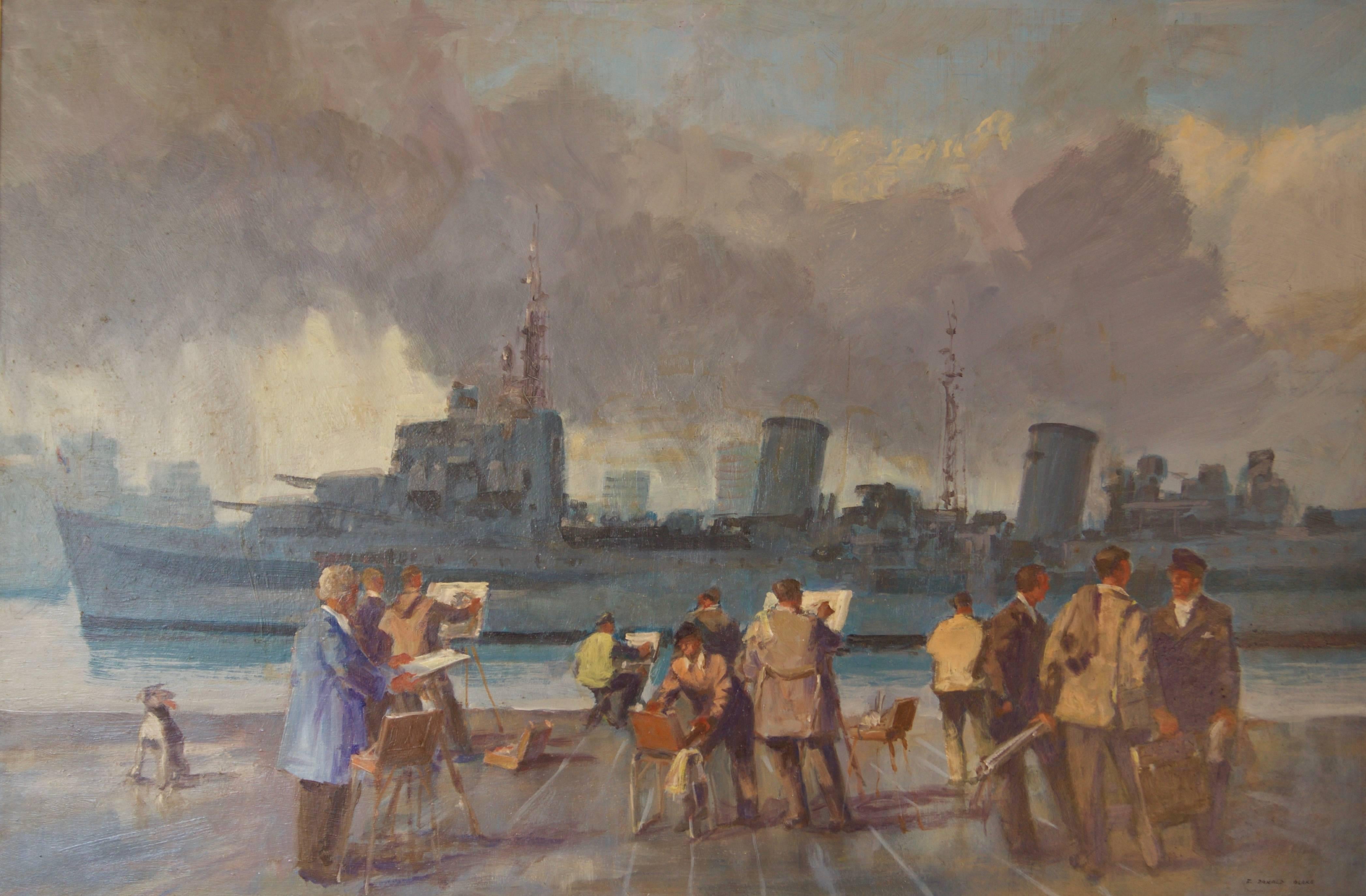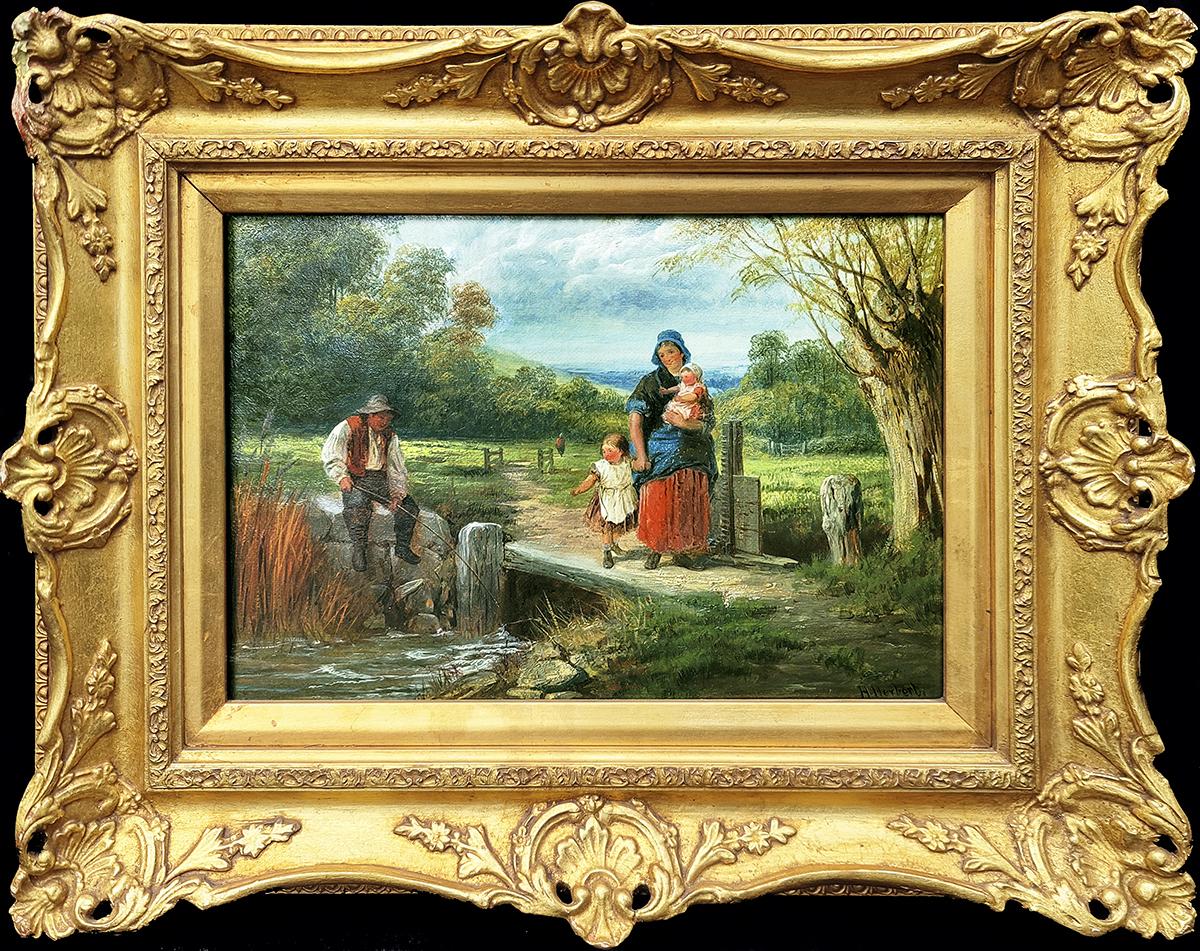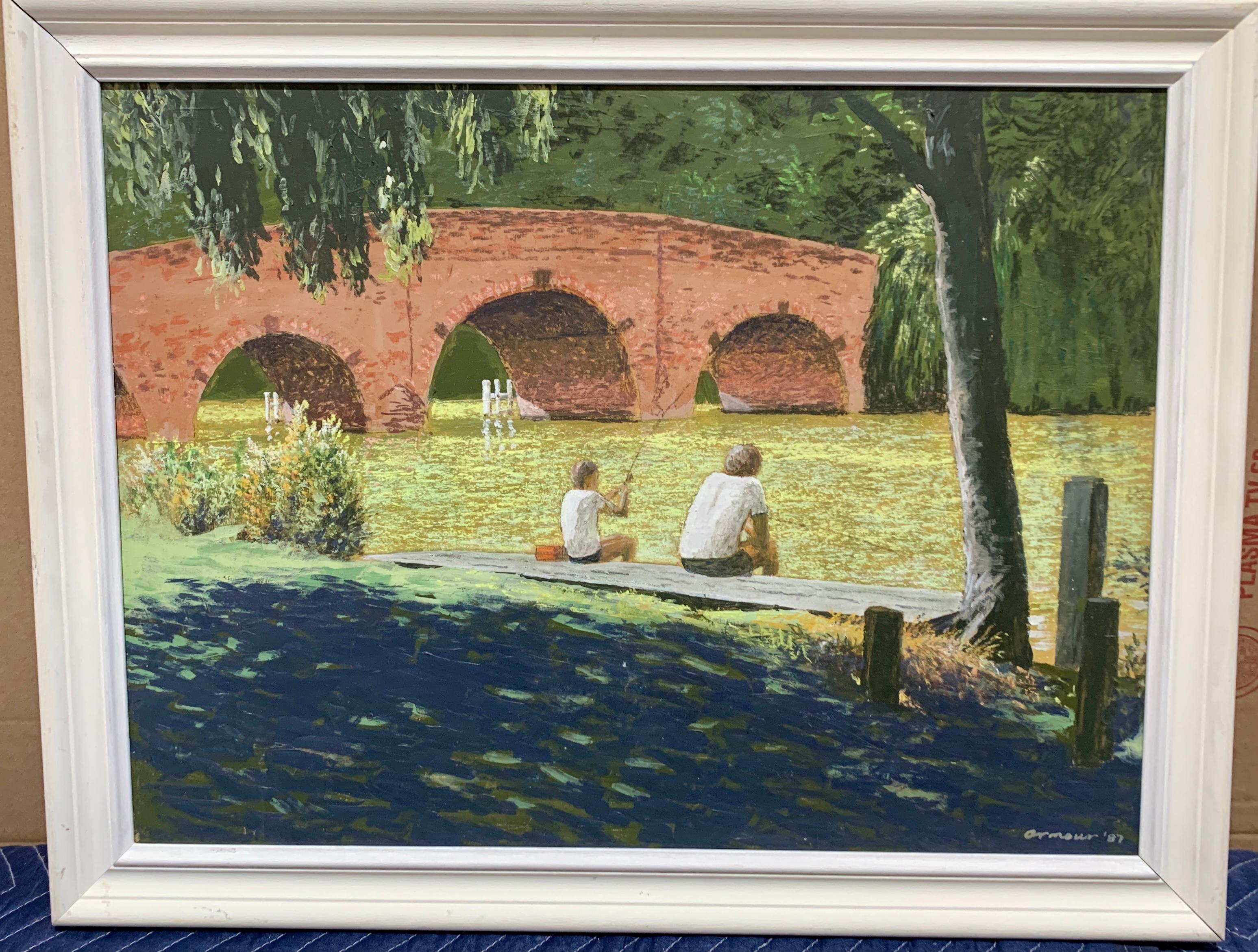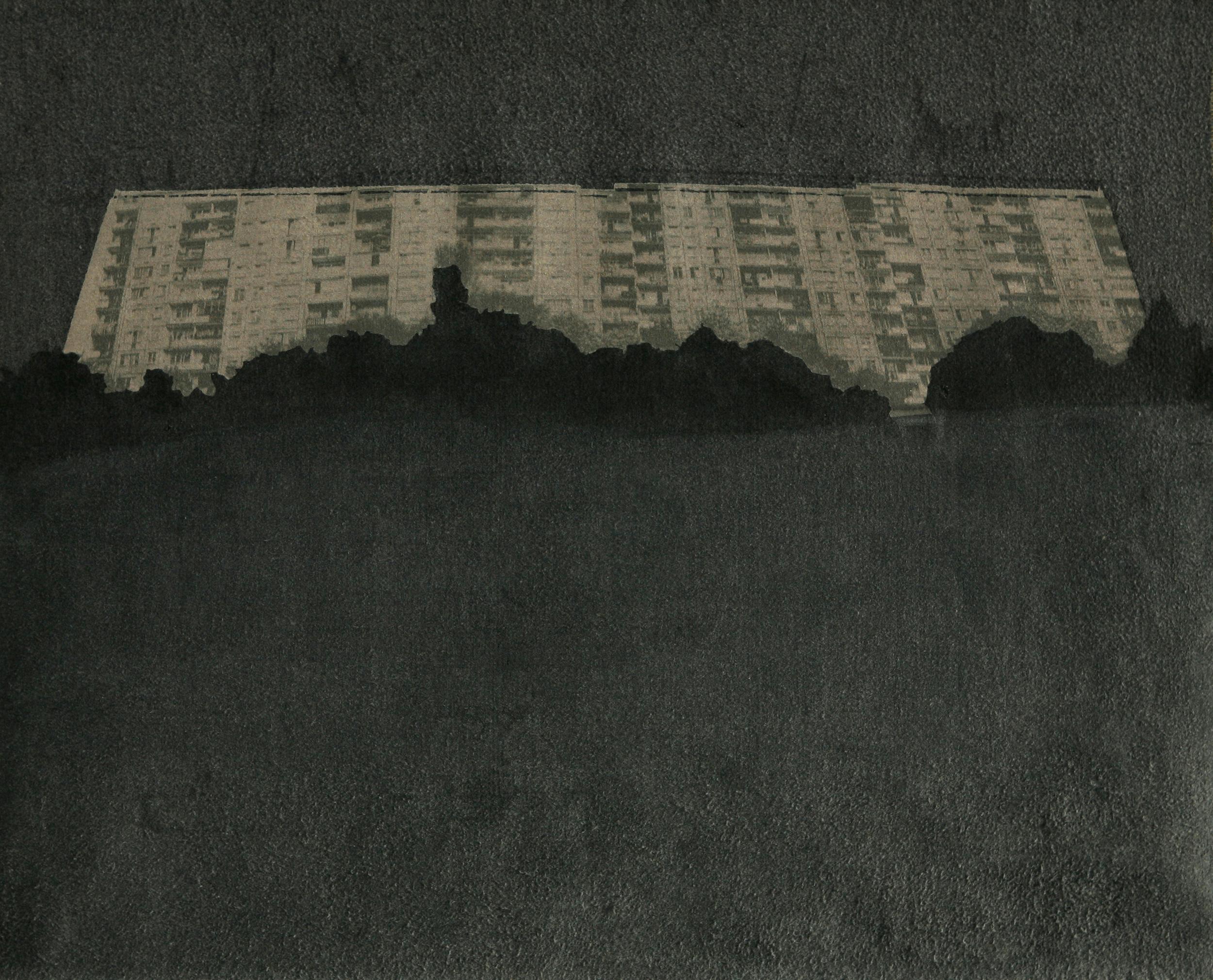Items Similar to Allegory of four elements, pupil of Jan Brueghel the Younger (1601-1678)
Want more images or videos?
Request additional images or videos from the seller
1 of 18
Allegory of four elements, pupil of Jan Brueghel the Younger (1601-1678)
About the Item
17th century Antwerp school
Landscape, animals and stilllife by a pupil of Jan Brueghel the Younger (1601-1678)
Figures by a pupil of Frans Francken II
Oil on canvas: h. 52,5 cm, w. 82 cm (11
Giltwood frame
Framed: h. 66 cm, w. 96 cm
Our magnificent painting has as its subject a theme frequently treated in the 17th century, the allegory of the four elements which make up the universe: air, water, fire and earth.
The elements are personified by four mythological figures gathered in the heart of a lush landscape, each with their own attribute.
Ceres symbolizing agriculture and abundance is seated on the right holding a cornucopia. On the left Amphitrite holds a conch shell from which water and fish flow, Urania holds an armillary sphere, symbolizing air. While Vesta, in profile, with her back turned to the viewer, holds a flaming torch.
The composition is divided in two, the forest landscape and the watercourse lined with reeds flowing into the sea.
This separation is accentuated by the still life of flowers, fruits and vegetables on the right balanced by the artistic dispersion of shells and fish on the left.
Finally, the upper left corner is occupied by the air domain: on the bare branches of a tree the different birds are gathered. Other birds fly over the sky. Two intertwined puttis hover above the waters, one equipped with a torch and the other with an armillary sphere.
In the background in the sea Neptune drives his chariot drawn by sea horses.
Our artist strives to paint the splendors of nature with remarkable realism and works meticulously to make fruits, vegetation, birds and marine animals as real as possible.
All the figures, animals, objects and the landscape thus form an idyllic scene representing in a microcosm the entire universe and by extension divine creation in all its splendor.
Beyond an aesthetic pleasure of contemplating the universe, the artist with an encyclopedic spirit like a naturalist or botanist lists the vegetables and fruits placed at the feet of the goddesses, as well as the different flowers that grow on the right .
Of course, this favorite subject of painters from the beginning of the 17th century required a mastery of several genres: human figures, still life as well as landscape, which explained the intervention of two artists.
Our painting is a collaborative work between two students of Antwerp artists: Jan Brueghel the Younger (the specialist in landscape and still life) and Frans Francken II (figure painter), the masters having worked together on several occasions to depict the theme of four elements, it is obvious that they had to delegate certain increasingly numerous orders to the members of their respective workshops.
For the allegories of the four elements executed jointly by Jan Brueghel the Younger and Frans Francken II see below:
Related works:
• Sotheby's (London (England)) 2014-07-10, 51 x 65 cm, oil on canvas, Jan Brueghel the Youngher & Frans Francken II
• Getty Museum, Los Angeles, Jan Brueghel the Younger & Frans Francken II, oil on panel 52,7 x 81,3 cm (inv 71.PB.28), 1635
• Schwerin Staatliches Museum, workshop of Frans Francken II, oil on panel (31x42 cm) (the figures on this painting are very similar to our work)
• Auction house Sophie Himbaut, Aix en Provence, 19/03/2021, oil on panel, 55 x 75 cm, Jan Brueghel the Younger and pupil of Frans Francken II
The first known painting dealing with the theme of the “four elements” by Jan Brueghel the Elder was painted in 1604 for Rudolph, Holy Roman Emperor (kept at the Kunsthistorisches Museum in Vienna, inv GG815).
This work provided the impetus for a great tradition of the theme of the four elements in Antwerp painting, painted mainly by Jan Brueghel the Younger, sometimes divided into four independent works for each element.
This methodical organization is reminiscent of the context of wunderkammers (cabinets of curiosities) and the rise of collecting in the 17th century.
According to a theory which indicates that all materials present on our globe are reducible to four elements: earth, water, air and fire. This theory, amply described by the Greek philosopher Aristotle, was abandoned during the 18th century following progress in chemistry.
- Dimensions:Height: 25.6 in (65.03 cm)Width: 37.8 in (96.02 cm)
- Medium:
- Movement & Style:
- Circle Of:Jan Brueghel the Younger (1601 - 1678, Flemish)
- Period:Mid-17th Century
- Condition:
- Gallery Location:PARIS, FR
- Reference Number:1stDibs: LU2433214081532
About the Seller
No Reviews Yet
Vetted Seller
These experienced sellers undergo a comprehensive evaluation by our team of in-house experts.
1stDibs seller since 2023
- ShippingRetrieving quote...Ships From: PARIS, France
- Return PolicyA return for this item may be initiated within 3 days of delivery.
More From This SellerView All
- A 17th c. Italian school, Capriccio with the Colosseum, circle of V. CodazziLocated in PARIS, FRA capriccio with the Colosseum in Roma 17th century Italian school Circle of Viviano Codazzi (1604-1670) Oil on canvas Dimensions: h. 35.43 in, w. 51.18 in Modern 17th century style ...Category
17th Century Old Masters Landscape Paintings
MaterialsCanvas, Oil
- Louis XIV and his army at the crossing of the Rhine by Adam-Frans van der MeulenBy Adam Frans van der MeulenLocated in PARIS, FRAdam-Frans van der Meulen (Bruxelles, 1632 - Paris, 1690) Louis XIV and his army at the crossing of the Rhine 12 June 1672 Signed A.F VANDERMEULEN at the right low corner Oil on can...Category
1670s Old Masters Landscape Paintings
MaterialsCanvas, Oil
- Ascension day in Venice by Louis de Caullery (1582-1621) 17th c. Flemish schoolLocated in PARIS, FRAscension Day in Venice 17th century Antwerp School Louis de Caullery (1582-1621) Oil on oak panel Dimensions: h. 12.8 in, w. 23.03 in (h. 32,5 cm, w. 58,5 c...Category
Early 17th Century Old Masters Landscape Paintings
MaterialsOil, Oak
- Allegory of Summer, workshop of Hendrick Van Balen 17th c. Antwerp schoolBy Hendrick van BalenLocated in PARIS, FRAllegory of summer, personified by Ceres Workshop of Hendrick Van Balen Antwerp School, early 17th century. Oil on copper, Dimensions: h. 52 cm, l. 40cm Antic giltwood frame Framed dimensions: h. 74 cm, l. 60cm Very good condition Our delicately painted work is part of the pictorial tradition that is both allegorical and mythological in vogue in Antwerp, whose leaders are Jan Brueghel the Younger and Hendrick Van Balen. Numerous works emerging from their workshops illustrate mythological subjects, the seasons, the elements, the senses or intertwining the lush landscapes, animals and gods of Olympus. At the heart of a green landscape dominated in its center by a generous apple tree, the beautiful Ceres, partially dressed in a large blue drape, is wearing a crown of ears of wheat, her symbol of the goddess of the earth and harvests. She holds the sickle in her right hand and carries sheaves of wheat. To her right a nymph holds the cornucopia while puttis pick and offer flowers. In the foreground are the summer fruits: figs, cherries, apples and lemons. A squirrel munching on cherries symbolizes toil and foresight, themes that are echoed in the work of the harvesters on the wheat fields in the background. The background is composed of vegetation, on the right a wild rose bush with its branches erect against a tree trunk, in the center of the trees with silvery green foliage. Our painter, a student of Hendrick Van Balen, finds his inspiration in the works of the master such as this nymph in yellow drapery seen from behind, one of the figures which accompanies many of the master's paintings. The elegant gestures, the flesh...The indisputable influence of Jan Brueghel the Younger is revealed in the treatment of trees and flowers, wild roses, tulips as well as in the still life with the squirrel in the foreground. The craze for this type of virtuoso painting where the mythological figures are only a pretext to better illustrate the landscape and plant species surrounding them, then generated orders from all over Europe. Hendrick Van Balen, Flemish painter, born and died in Antwerp (1575-1632). A student of Adam Van Noort, he entered the guild of Saint-Luc in 1593, later trained in Italy and was Van Dyck's first master. He often painted small characters taken from scenes from the Bible or classical mythology, on paintings in which Josse de Momper...Category
Early 17th Century Old Masters Figurative Paintings
MaterialsCopper
- Landscape with figures, workshop of Paul Bril, Italian school 17th CenturyBy Paul BrilLocated in PARIS, FRIdyllic landscape with myhological story of Cephalus and Procris Early 17th century Italian school Workshop Of Paul Bril (Antwerp, 1554 - Roma, 1626) Oil on poplar panel: H. 28 cm (1...Category
Early 17th Century Old Masters Landscape Paintings
MaterialsOil, Poplar
- Rest on the Flight into Egypt - Attributed to Pieter Van Avont - 17th c. FlemishBy Pieter van AvontLocated in PARIS, FRRest during the Flight into Egypt - The Virgin and Child with St. John the Baptist and the angels in a Landscape. Attributed to Pieter Van Avont (1600-1652) 17th century Antwerp School, circa 1630 Oil on oak panel, Dimensions: h. 38 cm, w. 50 cm (14.96 in x 19.68 in) Flemish style frame in ebonized and moulded wood Framed: h. 56 cm, w. 68.5 cm (22.04 in. x 26.97 in.) In the heart of a lush wooded landscape, the Virgin with Jesus rests in a green clearing accompanied by Saint John the Baptist and the cherubs. Seated to the left of the composition, the Virgin Mary holds the Child on her lap; the little Saint John the Baptist wearing the camel-skin tunic (his attribute) stands before Jesus to exchange a few caresses. On the right, the couple of cherubs are playing with the lamb of Saint John the Baptist, bringing a jovial character to the scene. A pair of gardening putti on the left pick flowers to bring bouquets to the Virgin and Jesus. Spring flowers such as tulips, daffodils and anemones that grow abundantly around them and enrich the composition with their shimmering colors. A lush rose bush blooms to the left of the figures offering delicate roses. (The rose is the flower associated with the Virgin Mary, who is the "mystical rose," the one that does not bear the "thorn of sin") At the feet of the Virgin are bunches of grapes (symbol of the future passion of Christ) as well as apples (symbol of the original fall of Man but also of the Redemption in Christ) In the foreground we find a wicker basket filled in profusion with beautiful flowers and guinea pigs nibbling on the blades of grass. In a cleverly arranged disorder, these elements of the still life with their strong symbolic power accentuate the religious theme, but are also an opportunity for the artist to demonstrate his know-how in the still life genre that is gaining momentum in Antwerp. The landscape behind the figures consists of a large tree with a twisted trunk and a luminous opening to the horizon placed on the right. We see Saint Joseph arriving with a donkey, a small reminder from the artist that the composition is associated with the episode of Rest during the flight into Egypt. The calm expanse of this bucolic forest opening onto the luminous distance, with its profusion of symbolic flowers and fruits, is particularly suited to this sacred scene. The theme of Jesus' sacrifice and his tragic fate is mitigated by cherubs who play with innocence and carelessness in the face of the fragility of life symbolized by cut flowers. The great mastery of the painter is manifested by the finesse of the drawing enhanced by the delicacy in the application of the brushstrokes bringing a multitude of details. The richness of the whole is exacerbated thanks to the choice of colours, this varied palette is an undeniable asset of our work. The virtuosity of our artist lies in his versatility, as much concerned with the success of the landscape and flowers as with the modelling of his figures. The cherubs with their naked bodies are gracefully illuminated by warm colours with subtle shadows, while the still life is rendered with astonishing realism, both in the precision of the drawing and in the countless shades of the flowers. There are several compositions similar to ours, of which below are the closest versions: • Sale, Jean-Claude Anaf et Associés, Lyon, 08/02/1998, attributed to Pieter Van Avont, oil on panel, h. 48 cm, l. 71 cm (recorded on RKD n° 31451). Comment: identical composition, only St Joseph with the donkey is different) • Christie's New York sale, 29/01/1998, Pieter Van Avont, oil on copper, h. 23.8 cm, w. 24.8 cm • Dorotheum sale, Vienna, 25/04/2017, Pieter Van Avont and Jan Breughel II, oil on copper, h .26 cm, w. 39 cm • Hermitage Museum, Saint Petersburg, Russia, Pieter Van Avont, oil on panel, h. 50.5 cm, w. 71.7 cm Peter van Avont, Flemish painter (Mechelen, 1600 - Antwerp. 1652) Born in Mechelen, he is mentioned in 1620 as a member of the painters' guild of his hometown. He left in 1 622 for Antwerp, where he was also a member of the guild. He collaborated with many painters, including Jan Brueguel the Younger, David Vinckboons, Lucas van Uden...Category
17th Century Old Masters Landscape Paintings
MaterialsOak, Oil
You May Also Like
- Wapping Group of Artists by the Thames - Mid 20th Century Oil by Donald BlakeBy Frederick Donald BlakeLocated in Watford, HertfordshireWapping Group of Artists by the Thames - Mid 20th Century Oil by Donald Blake Frederick Donald Blake Born in Greenock, Scotland in 1908 and died in 1997...Category
1950s Post-Impressionist Landscape Paintings
MaterialsOil, Canvas
- Fishing in the StreamLocated in Belgravia, London, LondonOil on canvas Canvas size: 8.5 x 12 inches Framed size: 13.75 x 17.25 inches Signed lower rightCategory
19th Century Figurative Photography
MaterialsCanvas, Oil
- Modern British 20th century River landscape, On the Thames at SonningLocated in Woodbury, CTWell painted and very decorative Modern British view on the Thames at Sonning Bridge. The artist was a local person living and painting in the area of Sonning. He painted along the...Category
1990s Impressionist Landscape Paintings
MaterialsOil, Board
- Venice Oil cm. 55 x 60 1999By Georgij MorozLocated in Torino, ITVenice Russian Art Landscape with gondolas in Venice Georgij MOROZ (Dneprodzerzinsk, Ucraina, 1937 - St. Petersburg, 2015) MUSEUMS Moscow, Tret’jakov Gallery Moscow, USSR Artists Col...Category
1990s Impressionist Landscape Paintings
MaterialsOil
- Untitled, Block, Series Stand - Contemporary Photography - Painting ObjectBy Magdalena PeszkowskaLocated in Salzburg, ATIndividual technique on grey military blanket Magdalena Peszkowska born in 1980 in Gdańsk, Poland. Studied in Department of Painting at Academy of F...Category
2010s Contemporary Landscape Paintings
MaterialsTextile, Mixed Media, Acrylic, Monoprint, Other Medium
- Early oil depicting the Great Fire of LondonLocated in London, GBThe Great Fire of London in September 1666 was one of the greatest disasters in the city’s history. The City, with its wooden houses crowded together in narrow streets, was a natural fire risk, and predictions that London would burn down became a shocking reality. The fire began in a bakery in Pudding Lane, an area near the Thames teeming with warehouses and shops full of flammable materials, such as timber, oil, coal, pitch and turpentine. Inevitably the fire spread rapidly from this area into the City. Our painting depicts the impact of the fire on those who were caught in it and creates a very dramatic impression of what the fire was like. Closer inspection reveals a scene of chaos and panic with people running out of the gates. It shows Cripplegate in the north of the City, with St Giles without Cripplegate to its left, in flames (on the site of the present day Barbican). The painting probably represents the fire on the night of Tuesday 4 September, when four-fifths of the City was burning at once, including St Paul's Cathedral. Old St Paul’s can be seen to the right of the canvas, the medieval church with its thick stone walls, was considered a place of safety, but the building was covered in wooden scaffolding as it was in the midst of being restored by the then little known architect, Christopher Wren and caught fire. Our painting seems to depict a specific moment on the Tuesday night when the lead on St Paul’s caught fire and, as the diarist John Evelyn described: ‘the stones of Paul’s flew like grenades, the melting lead running down the streets in a stream and the very pavements glowing with the firey redness, so as no horse, nor man, was able to tread on them.’ Although the loss of life was minimal, some accounts record only sixteen perished, the magnitude of the property loss was shocking – some four hundred and thirty acres, about eighty per cent of the City proper was destroyed, including over thirteen thousand houses, eighty-nine churches, and fifty-two Guild Halls. Thousands were homeless and financially ruined. The Great Fire, and the subsequent fire of 1676, which destroyed over six hundred houses south of the Thames, changed the appearance of London forever. The one constructive outcome of the Great Fire was that the plague, which had devastated the population of London since 1665, diminished greatly, due to the mass death of the plague-carrying rats in the blaze. The fire was widely reported in eyewitness accounts, newspapers, letters and diaries. Samuel Pepys recorded climbing the steeple of Barking Church from which he viewed the destroyed City: ‘the saddest sight of desolation that I ever saw.’ There was an official enquiry into the causes of the fire, petitions to the King and Lord Mayor to rebuild, new legislation and building Acts. Naturally, the fire became a dramatic and extremely popular subject for painters and engravers. A group of works relatively closely related to the present picture have been traditionally ascribed to Jan Griffier...Category
17th Century Old Masters Landscape Paintings
MaterialsOil, Canvas




